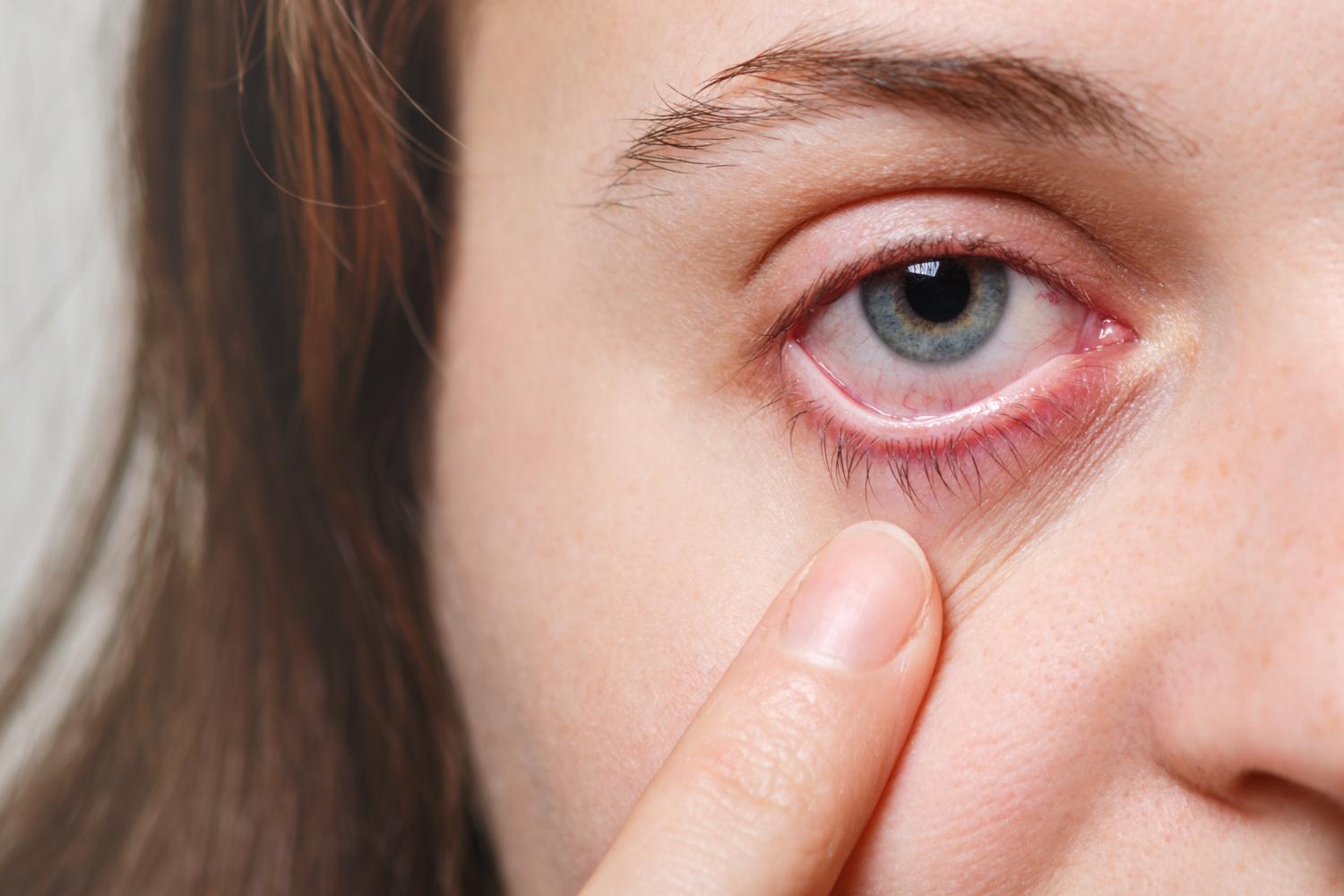Can Medication Treat Vision Loss?
More than 90 million Americans over 40—3 in 5 people in this age range—have some form of vision loss. This includes 1 million people classified as legally blind and 3 million with vision impairment after correction. The National Eye Institute (NEI) estimates these numbers will double by the year 2050.
If you or a loved one are managing vision loss, you should know that several treatment options are available to help slow the progression of your condition and even improve vision in some cases. In this article, we’ll look at several causes of vision loss and the FDA-approved medications used to treat those conditions.
Common causes of vision loss
Eye health and vision acuity vary from person to person: some people require corrective lenses at a young age; others don’t require any visual correction until old age. However, several common causes of vision loss can occur and seriously affect your ability to see.
Some common causes of vision loss and visual impairment include:
Uncorrected refractive error: Refractive errors are the most common vision problem worldwide. A refractive error occurs when the shape of your eye prevents light from properly focusing on the retina. This can lead to blurry vision, double vision, or vision loss. The primary forms of refractive errors are myopia (nearsightedness), hyperopia (farsightedness), astigmatism, and presbyopia.
Myopia (nearsightedness) is an eye condition where you can see close objects but have trouble focusing on things far away. Nearsightedness occurs when the curvature of the eye causes a refractive error, bending light rays improperly. This focuses visual images on the front of the retina instead of the retina itself, causing blurry vision. Conversely, farsightedness (hyperopia) is a common eye condition in which you can see distant objects but nearby objects appear fuzzy. Farsightedness occurs when a lack of curvature in the cornea refracts light rays improperly.
The American Academy of Ophthalmology (AAO) defines astigmatism as "an imperfection in the curvature of your eye's cornea or lens" that causes vision challenges. The cornea, the transparent front part of the eye, is supposed to be round, like a basketball or tennis ball. In individuals with astigmatism, the cornea becomes slightly warped and looks more like a football in shape. These imperfections make it difficult for your eyes to focus light on the retina (the back part of the eye), causing blurred or uneven vision.
Presbyopia is a natural refractive error that occurs with aging. The lens in your eye gets more rigid and stiff as you age, making it challenging for light to refract onto the retina properly. Presbyopia is also known as age-related hyperopia, as it makes it hard to see nearby objects.
Many people do not know that they have a refractive error and do not get it corrected. When a refractive error goes uncorrected, the individual managing the condition may strain their eyes or squint to be able to see adequately. Over time, this can further damage the eyes and impair vision. Lack of access to eye health care, prescription lenses, and suboptimal eye examination rates contribute to the prevalence of uncorrected refractive errors globally.
Glaucoma: The term "glaucoma" refers to a group of eye conditions brought on by abnormally high eye pressure. These conditions often develop slowly, with symptoms going unnoticed until the later stages of vision loss.
Open-angle glaucoma (OAG), the most common form, is characterized by increased eye pressure due to the drainage canals' progressive clogging. This type often has no early symptoms and can gradually lead to vision loss. Angle-closure glaucoma (ACG), or closed-angle glaucoma, occurs when the drainage canals get blocked quickly, causing a sudden rise in intraocular pressure, often accompanied by severe eye pain and nausea. Normal-tension glaucoma is less common, occurring when the optic nerve gets damaged even though the eye pressure is not very high. Secondary glaucoma results from an injury or other eye diseases, such as inflammation, tumors, advanced cases of cataracts, or diabetes. Each type of glaucoma requires different treatment methods, making an eye examination and accurate diagnosis crucial.
Cataracts: Cataracts globally cause 33% of vision loss problems. A cataract is characterized as a clouding or fogging of the eye’s lens. A cataract causes light to cloud, which can blur or dim vision. Cataracts develop slowly and usually cause only minimal symptoms early on. Common indicators of cataracts include cloudy vision, blurry vision, difficulty seeing at night, and other vision problems.
Cataracts are prevalent among older individuals. Nearly 50% of people over 80 experience some form of cataract in one or both of their eyes. Aside from age, the development of cataracts has also been linked to cigarette smoking, diabetes, obesity, and other health concerns.
Macular Degeneration: Macular degeneration, also known as age-related macular degeneration (AMD), is an eye disease that affects the central part of your vision. This happens when the macula, a small area in the retina's center, gets damaged. The retina is the part of your eye that sends light signals to your brain so you can see. With AMD, you may find it hard to see details, like words in a book or faces, while your side vision usually stays the same. There are two types: "dry" AMD, which is more prevalent and caused by the thinning of the macula as you age, and "wet" AMD, which is less common but more severe. AMD mainly affects older people, and while there's no cure yet, treatments can help slow it down.
Vision loss medications
For those managing visual impairment, several medical therapies approved by the Food and Drug Administration (FDA) can be used to slow and, in some cases, reverse vision loss. Corrective lenses and surgical procedures are the primary treatment options for eye conditions such as cataracts and some uncorrected refractive errors. Treating the underlying condition, such as diabetes or obesity, may help to reverse the impairment if it is the cause of vision loss. The section below will detail the various forms of medicated treatment available for specific eye conditions.
Medications for glaucoma
Medicated prescription eyedrops are usually the first line of therapy for glaucoma.
The primary classes of eye drops are:
- Prostaglandins: These are often the first choice for treatment. They work by increasing the fluid outflow in your eye to lower pressure. Examples include latanoprost (Xalatan) and bimatoprost (Lumigan).
- Beta-blockers: These reduce the production of fluid in the eye, thereby lowering eye pressure. Examples are timolol (Timoptic) and betaxolol (Betoptic).
- Alpha-adrenergic agonists: They both reduce fluid production and increase fluid outflow. Examples include apraclonidine (Iopidine) and brimonidine (Alphagan).
- Carbonic anhydrase inhibitors: These decrease fluid production in the eye. Dorzolamide (Trusopt) and brinzolamide (Azopt) are commonly used.
- Rho kinase inhibitors: A newer class of drugs, these work by increasing the outflow of eye fluid. An example is netarsudil (Rhopressa).
- Combination eye drops: Some eye drops combine medications to treat glaucoma differently. Examples are dorzolamide-timolol (Cosopt), which is a combination of a beta blocker and a carbonic anhydrase inhibitor, and brimonidine-timolol (Combigan), which is a mix of an alpha-adrenergic agonist and a beta blocker.
Medications for macular degeneration
Clinical trials for medicated macular degeneration therapies began in the early 2000s. In 2008, the FDA approved the first class of drugs for age-related macular degeneration. These drugs are known as anti-VEGF medications. VEGF stands for “vascular endothelial growth factor,” a naturally occurring protein that stimulates the growth of new blood vessels. While VEGF is essential for normal bodily functions and healing, overproduction of this protein can cause abnormal blood vessels to grow in the retina, a condition called neovascularization.
These abnormal vessels are often weak and leaky, leading to conditions like wet age-related macular degeneration (AMD) and diabetic retinopathy. In wet AMD, the vessels leak into the macula (the part of the eye responsible for sharp central vision), causing scarring and loss of central vision. In diabetic retinopathy, VEGF contributes to blood vessel leakage and scar tissue formation, which can cause blurry or patchy vision and, if left untreated, can lead to blindness.
Anti-VEGF medications work by blocking the effect of VEGF in the eye, which helps to slow the growth of these abnormal and damaging blood vessels.
Anti-VEGF medications are usually administered via injection into the eye. If this sounds like a nightmare, don’t worry: the eye is numbed using a local anesthetic before the injection occurs. Anti-VEGF injections are painless and usually only cause mild side effects (if they occur at all).
Injectable anti-VEGF drugs include:
- Ranibizumab (Lucentis): This drug is FDA-approved for treating wet age-related macular degeneration (AMD), diabetic macular edema (DME), and other conditions that cause leakage and growth of abnormal blood vessels in the retina.
- Aflibercept (Eylea): This medication treats wet AMD, DME, and macular edema following retinal vein occlusion. Like ranibizumab, it's also given as an injection into the eye.
- Bevacizumab (Avastin): Originally developed to treat various types of cancer, bevacizumab is also used off-label (not officially approved for this use but still prescribed based on clinical evidence) to treat eye conditions like wet AMD and DME. It's usually a more cost-effective option.
- Brolucizumab (Beovu): The FDA approved brolucizumab (Beovu) in 2019 for the treatment of wet AMD, giving patients another option. In some cases, it might also require fewer injections than other anti-VEGF medications.
These drugs have been shown to lead to significant improvements in vision. 60% of patients who underwent clinical trials for ranibizumab and bevacizumab demonstrated 20/40 vision or better after two years of regular treatment.
If you or a loved one are dealing with age-related macular degeneration, talk to a health care provider about whether or not anti-VEGF treatment is right for you. These injections must be performed in a health care setting (like an ophthalmologist's office). While highly effective, these therapies do require some commitment for proper administration.
In addition, these injections have been shown to cause side effects in some patients. The side effects of anti-VEGF treatment require immediate medical attention.
Rare side effects include:
- Eye pain
- Swelling
- Infections
- Sudden vision loss
- Redness around the eye
- Light sensitivity
Again, these symptoms require urgent medical attention. If you or a loved one is experiencing any of these indications after undergoing an anti-VEGF injection, call your opthalmologist immediately.
There are diverse treatment options available for a wide range of vision problems. Therapies will vary depending on the patient and condition, but vision improvement is possible with corrective lenses, medicated treatment, and surgical procedures. The first step, however, is checking to ensure your eyes function properly. The only way to accomplish this is through a thorough eye examination under the supervision of a qualified eye doctor. The detection of these conditions is crucial to their treatment. If you’ve never had an eye exam, or it’s been a while since your last one, use National Eye Exam Month as an excuse to get your eyes checked.
Related posts

The human eye is an extremely sensitive organ that interacts with a number of systems in the body, so there are a myriad of reasons why someone might experience bloodshot eyes.

Explore UV sunglasses, clothing, stickers, and beach umbrellas that enhance your sun protection routine, allowing you to enjoy summer safely. Learn how these products offer added defense against harmful UV rays.

Learn about migraines, their triggers, symptoms, and effective treatments to help manage this common yet disabling neurological condition.

Acute and chronic back pain can affect patients’ quality of life, mobility, and long-term health. In this blog article, we’ll dive deep into the primary causes of lower back pain, the symptoms it causes, and the standard treatment options available.

Hair loss affects millions of men. This article will detail some treatment plans for hair loss in men, common causes of hair loss, and prevention tips.

Diuretics are commonly supplied as oral capsules. The diuretic drugs used to treat high blood pressure and heart failure are only available via prescription.

Air travel can be even worse if you fly with an ear infection. This article features travel suggestions and treatment options for you and your family.

Heat exhaustion and heat stroke vary in terms of severity, symptoms and treatment. Read on to learn more about the differences between these conditions, along with treatment and prevention measures.

The impact of so much screen time on children creates ripple effects that span both physical and emotional domains. Physically, the strain of watching a screen for many hours can tire a child's eyes.
